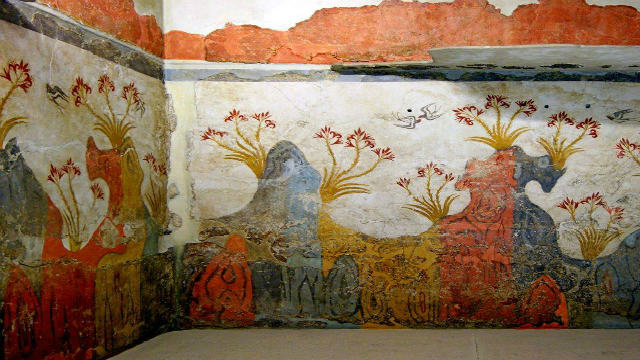
You are using the Free Edition of SantoriniAPP. For extensive information on Santorini, GO PRIME with our comprehensive Greek Travel App featuring the full editions of Santorini and 25 more Greek islands & Athens.

Santorini, with its sheer cliffs and deep blue sea, boasts a landscape untouched by growth, where the only colors are the layers of pumice on the cliff face. Its history is as dramatic as its scenery, steeped in myth and legend.
Originally named Kallístē, Strongýlē, or Thēra, Santorini acquired its modern name from the old cathedral in Perissa, dedicated to Saint Irene. Legend intertwines with its creation, as Euphemus, son of Poseidon, threw a clod of earth into the sea, birthing the island.
Myths abound, linking Santorini’s volcanic eruptions to Phaethon’s downfall and the fabled Atlantis. Archaeological evidence, like the frescoes at Akrotiri, suggests connections to Plato’s descriptions of Atlantis.
The island’s history unfolds at the Akrotiri archaeological site, revealing Minoan settlements destroyed by volcanic eruptions around 1550–1500 BC. Over time, Santorini saw Persian, Roman, Byzantine, and Venetian rule, each leaving its mark. Ottoman rule brought relative autonomy, with both Catholic and Orthodox communities coexisting.
Independence came in 1821, followed by occupation during WWII and a devastating earthquake in 1956. Today, tourism flourishes, drawing visitors with its picturesque villages and historic sites. Though the pumice industry has faded, Santorini remains a vibrant destination, ranking high among global travel destinations.